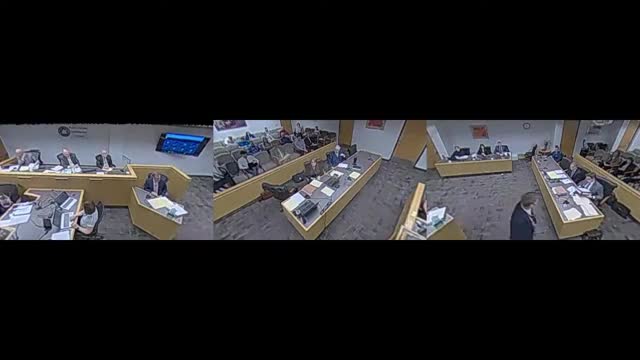Expert testimony clarifies negligence versus strict liability definitions in wildfire cases
March 23, 2025 | Utah Public Service Commission, Utah Subcommittees, Commissions and Task Forces, Utah Legislative Branch, Utah
This article was created by AI summarizing key points discussed. AI makes mistakes, so for full details and context, please refer to the video of the full meeting. Please report any errors so we can fix them. Report an error »

The Phase III Hearing on DAO Docket Issues (24-035-04) regarding RMP's Rate Case took place on March 23, 2025, in Utah, focusing on the legal concepts of negligence and strict liability as they pertain to utility operations and insurance coverage.
The meeting commenced with a review of definitions related to negligence, particularly in a commercial context. A key point of discussion was the distinction between negligence and strict liability. Testimony highlighted that strict liability holds a person accountable for harm regardless of negligence, while simple negligence requires proof of negligent behavior. The participants sought to clarify these terms to ensure a mutual understanding as they progressed through the hearing.
Mr. Glebe's testimony was referenced, which stated that strict liability applies even without a finding of negligence. This was affirmed by the witness, who acknowledged the difference between the two concepts, noting that negligence is often viewed through an insurance lens rather than a strictly legal one. The witness emphasized that while negligence involves a breach of duty leading to avoidable harm, strict liability does not necessitate such a finding.
Further discussions included the implications of liability insurance, with the witness explaining that insurance policies typically do not differentiate between liability arising from negligence and that arising in the absence of fault. This point underscored the idea that insurers may not make value judgments regarding fault when renewing policies.
The hearing also touched on the concept of inverse condemnation, particularly in relation to California's utility liability framework. It was noted that neither strict liability nor inverse condemnation requires a finding of negligence for liability to be established.
As the hearing progressed, the witness reiterated that in the context of wildfire events, he assumed 100% negligence if any signs of negligence were present. This assumption was framed as a prudent approach to settlement discussions.
In conclusion, the hearing provided a detailed examination of the legal definitions and implications of negligence and strict liability within the utility sector. The discussions aimed to clarify these concepts for the ongoing rate case, ensuring that all parties involved had a clear understanding as they moved forward. The next steps in the proceedings will likely involve further exploration of these legal principles as they apply to the case at hand.
The meeting commenced with a review of definitions related to negligence, particularly in a commercial context. A key point of discussion was the distinction between negligence and strict liability. Testimony highlighted that strict liability holds a person accountable for harm regardless of negligence, while simple negligence requires proof of negligent behavior. The participants sought to clarify these terms to ensure a mutual understanding as they progressed through the hearing.
Mr. Glebe's testimony was referenced, which stated that strict liability applies even without a finding of negligence. This was affirmed by the witness, who acknowledged the difference between the two concepts, noting that negligence is often viewed through an insurance lens rather than a strictly legal one. The witness emphasized that while negligence involves a breach of duty leading to avoidable harm, strict liability does not necessitate such a finding.
Further discussions included the implications of liability insurance, with the witness explaining that insurance policies typically do not differentiate between liability arising from negligence and that arising in the absence of fault. This point underscored the idea that insurers may not make value judgments regarding fault when renewing policies.
The hearing also touched on the concept of inverse condemnation, particularly in relation to California's utility liability framework. It was noted that neither strict liability nor inverse condemnation requires a finding of negligence for liability to be established.
As the hearing progressed, the witness reiterated that in the context of wildfire events, he assumed 100% negligence if any signs of negligence were present. This assumption was framed as a prudent approach to settlement discussions.
In conclusion, the hearing provided a detailed examination of the legal definitions and implications of negligence and strict liability within the utility sector. The discussions aimed to clarify these concepts for the ongoing rate case, ensuring that all parties involved had a clear understanding as they moved forward. The next steps in the proceedings will likely involve further exploration of these legal principles as they apply to the case at hand.
View full meeting
This article is based on a recent meeting—watch the full video and explore the complete transcript for deeper insights into the discussion.
View full meeting

